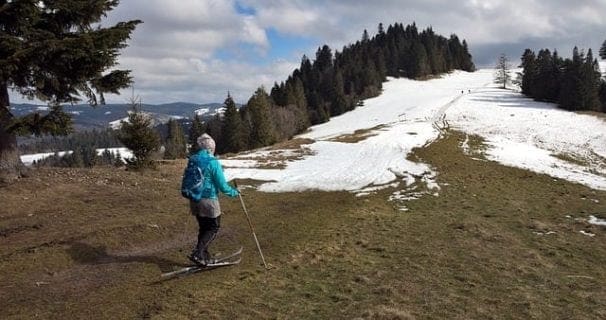 Imagine drilling into the accumulated layers of ice on Mount Logan, the highest peak in Canada at 5,959 metres in Yukon’s Saint Elias Mountains, to extract ice-cores for scientific study.
Imagine drilling into the accumulated layers of ice on Mount Logan, the highest peak in Canada at 5,959 metres in Yukon’s Saint Elias Mountains, to extract ice-cores for scientific study.
Dr. Gerald Holdsworth, expeditionary climber and climate scientist at the University of Calgary’s Arctic Institute of North America had been doing it for years when I first met him in the spring of 1986.
He patiently explained the rationale for his work to me as I became the institute’s new executive director: “Each year the fall of rain and snow on the mountain contains an atmospheric record of exactly what is in the troposphere. As it freezes in to Logan’s surface, it seals away a cumulative record of the Earth’s climate.”
He explained that the troposphere is the lowest region of the atmosphere, extending from the Earth’s surface to a height of 10 or 11 kilometres. In layman’s terms, the troposphere is like a clear sheet of plastic-wrap encasing the globe. The climatic fingerprint of our entire history as a species is encased within it.
My first exposure to the world of Holdsworth was classic science. His work was novel and rigorous, but contained no cause for alarm. Multiple peer reviewed papers were published in leading journals and the only climate crisis I had to deal with in 1986 was the failure of the refrigeration unit in one of the institute’s trailer units where Gerry stored his core samples.
Then came a morning briefing in the fall of 1987. Gerry called from his lab and said he wanted to show me a plotting of data that tracked CO2 emissions evident in the Logan core from 1700 to 1986.
“Sure, I’m available anytime this afternoon,” I recall saying with mild interest.
In he came with a roll of graph paper under his arm. On the X axis he had plotted CO2 parts per million in the Logan troposphere; on the Y axis he had plotted years from 1700 to present. He explained that his data covered the early onset of the industrial revolution in Europe during the late 1700s, right through its global expansion – and he showed me the abrupt uptick in CO2 parts per million that started to occur in the mid-1800s. I remember thinking that the graph looked just like a hockey stick.
Gerry went on to speculate that global temperatures were slowly rising as the tropospheric CO2 concentrations increased. When I asked him what policy recommendations he had for government, he replied: “I think it’s time to start exercising the precautionary principle.”
That afternoon with Gerry marked a change in my life. From then on, I’ve been alive to observations and anecdotes of climate change. I now have hundreds of them stored in my memory.
In the late 1980s, I made several work trips to Kuujjuaq, the regional capital of Nunavik in northern Quebec. On my first trip, there was a stir of excitement as a grandmother reported a huge mosquito had been spotted by the Arctic Co-op store. It was later identified as a dragonfly, newly north from its accustomed range.
In a parallel fashion, I was soon asked, “What kind of bird is that,” about a red-breasted robin that sat on the utilidor in Inuvik. The Inuvialuit elder who asked said, “We have no word in Inuvialuktun for that bird – it must have strayed in from the south.”
Next came the reported observations of ‘pizzly bears’ – rare grizzly-polar bear hybrids that occur when breeding ranges extend north and enable cross-breeding.
Now I’m constantly triggered by environmental changes both subtle and blatant. For example, at my home in Skelhp on B.C.’s Sunshine Coast, my neighbour and I recently had a discussion about the abnormal die-off of young cedar trees this spring. A young arborist I know says it’s happening all along the coast because of the earlier onset of warm spring weather. It’s shocking young cedars with poorly-established root systems.
When you live in the forest, you see some things sooner than city folk. And when you travel to cities as a country resident, you see things differently, too.
Our recent venture to the Montreal International Jazz Festival exposed us to a series of the hottest July days on record in southern Quebec. It was hard not to think of the young cedars when I watched little children in strollers crying in the incessant heat.
Troy Media columnist Mike Robinson has been CEO of three Canadian NGOs: the Arctic Institute of North America, the Glenbow Museum and the Bill Reid Gallery.
The views, opinions and positions expressed by columnists and contributors are the author’s alone. They do not inherently or expressly reflect the views, opinions and/or positions of our publication.


